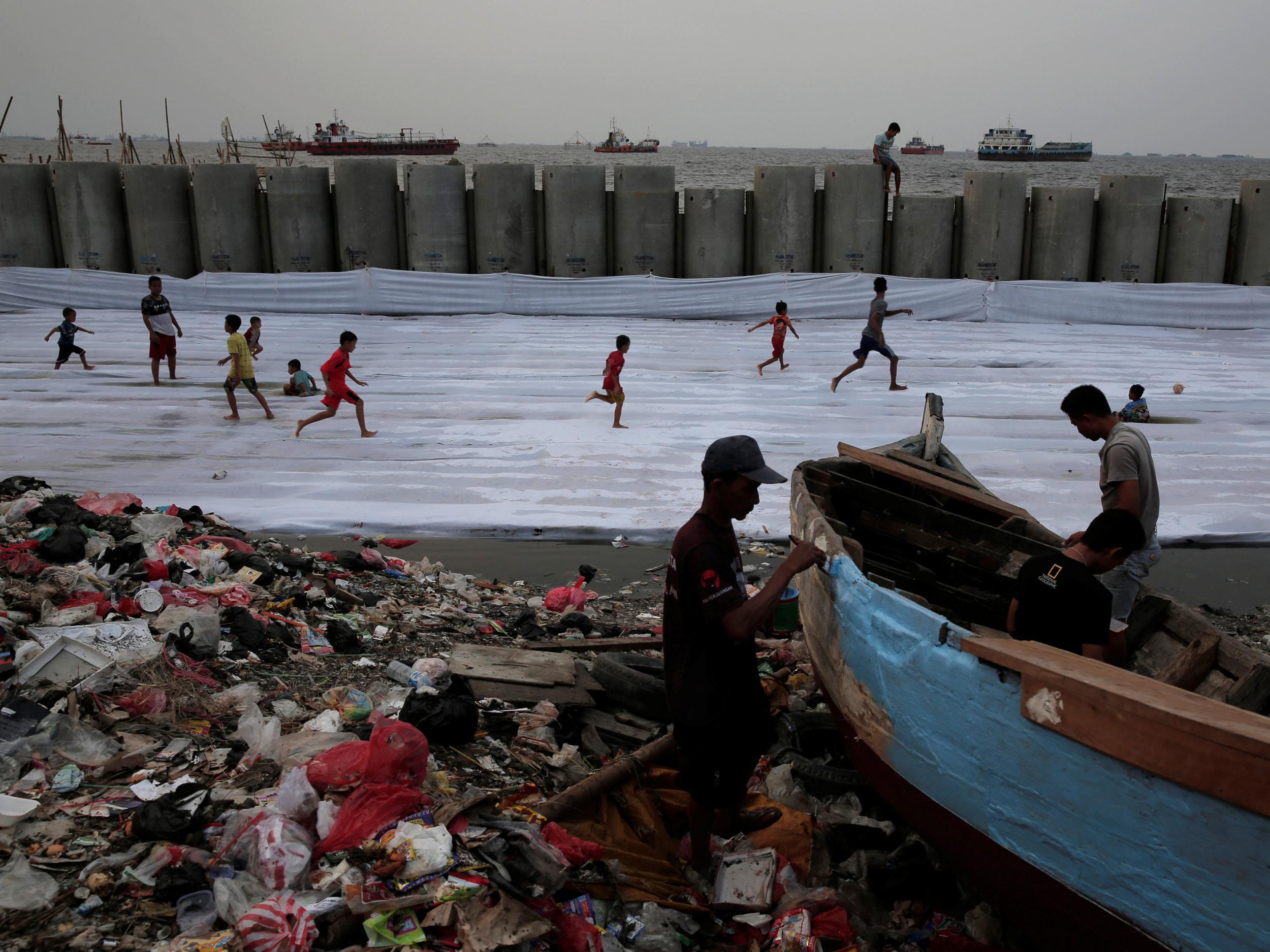Indonesia’s sinking shoreline: Climate change and environmental destruction cause daily flooding
Around the Indonesian coastline, residents have become used to water seeping into their homes and classrooms with the tide, as the cutting back of mangrove forests has left communities in the low-lying archipelago exposed to the effects of global warming

Your support helps us to tell the story
From reproductive rights to climate change to Big Tech, The Independent is on the ground when the story is developing. Whether it's investigating the financials of Elon Musk's pro-Trump PAC or producing our latest documentary, 'The A Word', which shines a light on the American women fighting for reproductive rights, we know how important it is to parse out the facts from the messaging.
At such a critical moment in US history, we need reporters on the ground. Your donation allows us to keep sending journalists to speak to both sides of the story.
The Independent is trusted by Americans across the entire political spectrum. And unlike many other quality news outlets, we choose not to lock Americans out of our reporting and analysis with paywalls. We believe quality journalism should be available to everyone, paid for by those who can afford it.
Your support makes all the difference.Nur Anisa Rahmadani has to wade through shin-deep seawater to get to her primary school in Pantai Bahagia village on the north coast of Indonesia’s Java island.
Almost every day, the sea, which used to lap the shore a few kilometres away, floods their schoolyard and classrooms – clear evidence of the threat that Java’s sinking coastline poses to millions of people.
Experts say Pantai Bahagia, or “Happy Beach”, and scores of other villages and towns along the shoreline are being inundated because of a grim combination of manmade environmental destruction and climate change.
Roughly 40 per cent of Jakarta is below sea level and a new sea wall has had to be built in a bid to hold back the waves.
Still, large areas in the north of the city are regularly swamped, forcing businesses to pile up sandbags for protection while food stalls feed the hungry with water sloshing around their feet.
Hundreds of kilometres to the east, in the seaside town of Demak, residents prop up their fridges and televisions on concrete blocks to keep them out of the murky water that flows into their homes during high tides.
Some have simply abandoned their homes as the sea creeps closer.
Indonesia, an archipelago of thousands of islands, has about 50,300 miles of coastline, making it particularly vulnerable to climate change.
It is also home to more than a fifth of the world’s mangrove forests, which naturally help keep the tides out. But only 3 million hectares of mangroves remain, down from nearly double that three decades ago, according to Wetlands International.
For years, coastal communities have chopped down the mangrove forests to clear the way for fish and shrimp farms, and for rice paddies.
In some places, hundreds of metres of coast that used to be lined with mangroves have now been swallowed up by the sea.
The government has scrambled to work with environmental groups to replant mangroves, build dykes and relocate some people.
But many residents, mostly poor fishermen and vendors, are either reluctant to leave their old family homes or simply have nowhere to go further inland on crowded Java.
“I hope to be able to move, but my family has lived here for decades. Where can I go?” says Udin, a 30-year-old fisherman in Pantai Bahagia, 56 miles east of Jakarta.
Udin says he has had to raise his wooden house higher on its stilts twice in recent years. Nearby, the tides are slowly claiming the village mosque and cemetery.
“Only some of us are aware of the benefits of mangroves. There needs to be more collective responsibility,” Udin says.
Despite the nearly daily flood at her school, 10-year-old Nur and her classmates are undeterred.
“I stay in school and keep up my spirits up because I want to pursue my ambition of being a lecturer,” she says.
Join our commenting forum
Join thought-provoking conversations, follow other Independent readers and see their replies
Comments